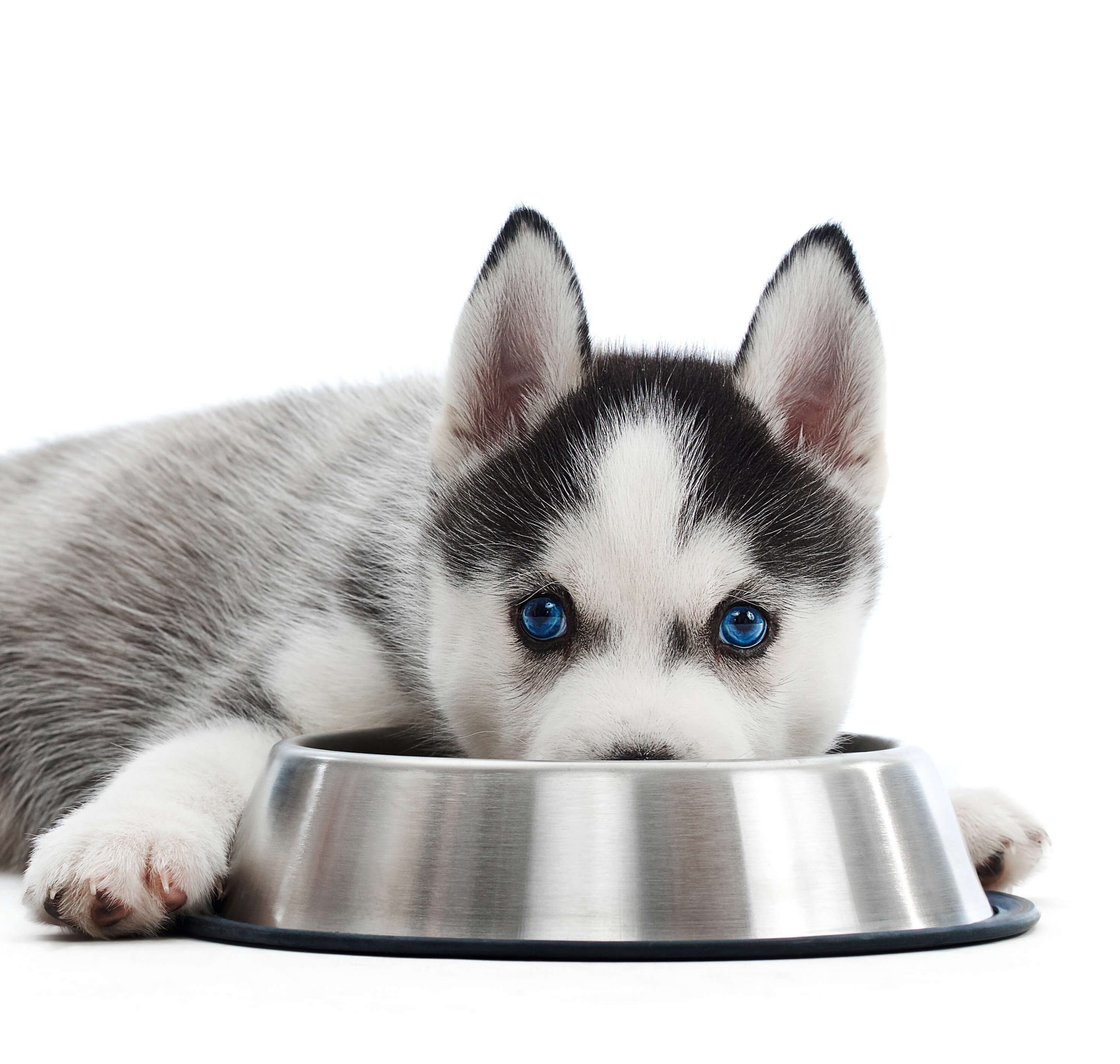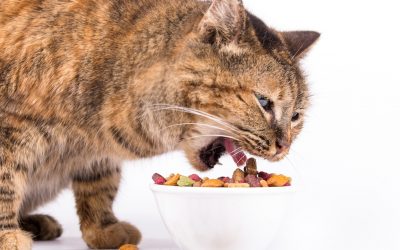Are you responsible for your dog’s obesity?
Pet obesity is a growing trend in America. Dogs that are overweight can develop serious conditions including diabetes, joint diseases, excessive panting, pancreatitis, heart problems and hyperthyroidism in cats. Obesity occurs when the amount of food consumed exceeds the amount of calories burned. Food that isn’t burned through activity or exercise is stored as fat. Overfeeding coupled with lack of exercise causes obesity and is detrimental to a dog’s health.
There are several things you can do to prevent obesity. Begin by choosing a nutritional food source. Dry and canned food are convenient and cost effective. Things to consider include age, breed, existing health conditions, and lifestyle.
NUTRITIONAL CONSIDERATIONS
Proteins
Amino acids are compounds that join together to form proteins. They are the building blocks to cell growth, maintenance, and repair. Proteins are very important to a dog’s daily diet. Protein deficiency can negatively affect your dog’s skin and coat and may even stop its growth.
Fats
Fats are essential to normal cell growth and provide the most concentrated source of energy for your dog. Since your dog cannot produce the five essential fatty acids, he must rely on you to add them to his diet. Fats will help in your dog’s cognitive function and in the maintenance of healthy skin, fur, and eyes. Fats are also responsible for improving taste and adding flavor to foods. They can also increase the absorption of certain vitamins.
Carbohydrates
Most carbohydrates can be easily and rapidly digested and converted to glucose. They are a good source of energy for your dog and play an important role in dog food. Carbohydrates come mainly in the form of whole grains and can furnish iron, minerals, and fiber. Carbohydrates increase the shelf life of food and give it its texture and structure. Not all forms of starchy carbohydrates are easy to digest (known as fiber). Starchy carbohydrates help keep tartar build-up under control and help to reduce your dog’s appetite. By keeping your dog feeling full longer and curving your dog’s appetite, you can prevent obesity.
Vitamins and Minerals
Vitamins work in conjunction with minerals and are required for normal metabolic functioning. Vitamins are organic and are responsible for many complex chemical processes including boosting the immunity system and breaking down nutrients. Minerals are inorganic and are essential in coordinating and regulating important bodily functions, including the formation of bone and cartilage, nerve and muscle functioning, and hormone reproduction. The presence of these nutrients must be at the recommended levels and is based entirely on the age, weight, medical history, and lifestyle of your pet.
Supplements
There are many choices of dog food for each phase of your dog’s life. You should consult with a veterinarian to learn about your dog’s nutritional profile and determine if nutritional supplements are a good option for your dog.
AGE
Puppy
When your puppy is 30 days old, you should begin weaning him off mom’s milk. You can do this by separating mom from the litter for a few hours every day to reduce dependency. During this time, begin feeding your puppy a weaning mixture of nutritious and scientifically formulated food in a shallow pan. Food that is made for puppies will contain 30% of protein and twice as many calories as an adult dog. This will stimulate growth.
You want to feed your puppy between three to four meals a day. Use scheduled meal feedings to help condition the body. This will help with potty training. Monitor your puppy’s weight gain to determine if the growth rate is desirable.
We highly recommend that you consult with your veterinarian to determine what brand of formula and puppy food is best for your puppy. There are many variables in determining the nutritional and caloric needs for your puppy, including breed size, rate of growth, and breed tendencies.
Adult
Food options vary tremendously. Your safest bet is choosing a premium brand. My recommendations are Hill’s Science Diet or Royal Canin. You want to choose a well-balanced food source for this stage in your dog’s life. Your dog’s health, happiness, and wellness will be significantly impaired by poor food quality.
Timed feeding is common with adult dogs. I find it works well to prevent your dog from overeating. Using this method, you make a portion of food available to your dog for a designated amount of time. Thirty minutes should be sufficient. After the amount of time has elapsed, you remove the bowl. Your adult dog will come to understand that the food will not be available later. Some people prefer free-feeding, but it may lead to an overweight dog.
Dog food manufacturers recommend amounts often too high in calories and adult dogs are at a greater risk of gaining excess weight. Ask your veterinary professional to suggest a feeding timeline and amount. Your dog’s breed, age, and health will be important factors in determining a balanced and nutritious diet.
Senior
A dog eight years or older is said to be in his senior years. If your dog is doing well on his current diet, your vet may recommend that you do not change his food. However, there are different food considerations for dogs at this age. Senior dogs will vary in their nutritional needs as every dog ages differently and has his own medical history. Senior dogs require high quality protein foods that are lower in calories. Nutritional supplements may be a consideration but should be discussed with your vet.
REVERSING OBESITY
Feeding
Choosing the right food and determining the right amount to feed your overweight dog is the first step in improving your dog’s health. A diet that reduces calorie intake, is high in fiber, and contains the appropriate amounts of vitamins and minerals is ideal. Consult a veterinarian for feeding recommendations and an in depth nutritional consultation. When changing your dog food, we recommend you add new ingredients one at a time to see if there are any problems with food digestion or intolerance. If this isn’t possible, try mixing old food with new food for a few days.
Exercise
Provide opportunities for your dog to exercise and expend energy. Get into a routine and slowly increase the frequency and duration of your sessions. An effective exercise program will reduce your dog’s appetite, change your dog’s body composition, and increase your dog’s resting metabolic rate. Thirty minutes a day is a good start.
Habits
Cut down on giving your dog treats, stop overfeeding, and encourage increased activity. Do not feed your dog human food and focus on feeding your dog smaller portions more frequently.
Examinations
Take your dog to the vet for their annual check-up. There may be underlying health problems that may be causing your dog’s obesity.
Final Thoughts
Having pets makes us responsible for their care. This includes preventing pet obesity by making sure they are getting high quality foods, plenty of exercise, and annual check-ups. We love our pets. Let’s do right by them. Call your vet for recommendations on reversing pet obesity.





0 Comments